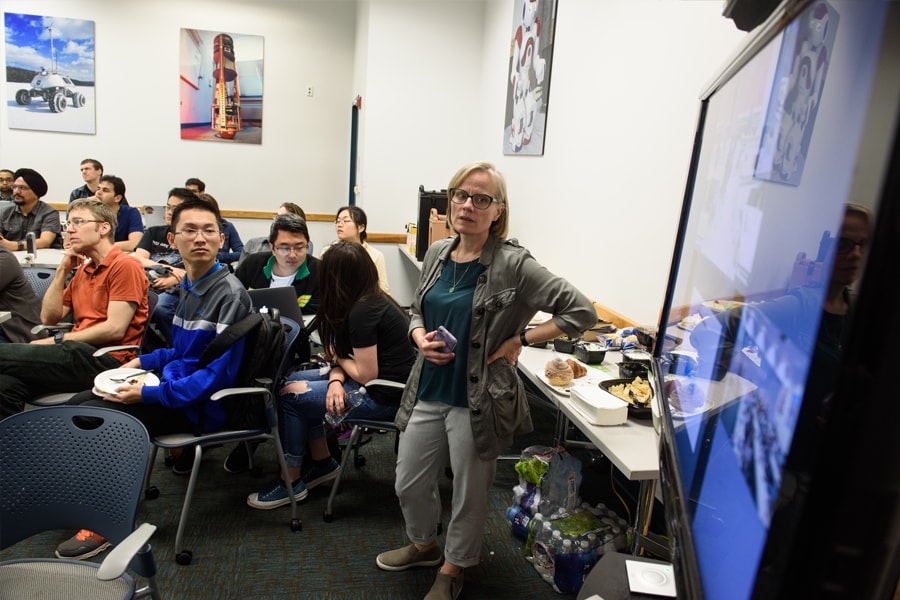
Neurohackathon Contestants Analyze Brain Data in New Ways
Five Carnegie Mellon University students won the third annual BrainHub Neurohackathon with their analysis of the interactions between two regions in the brains of mice as they reached for and moved a joystick. The findings could help pave the way for accurately using neural activity to control a video game or computer.
The hackathon, organized by Alison Barth, professor of biological sciences and BrainHub's interim director, challenges students from CMU's neuroscience, statistics, machine learning and computer science programs to take existing datasets and make novel interpretations of them in just one day. This year, 55 students on 13 teams entered the contest, with several teams participating from CMU's campuses in Qatar and Rwanda.
The winning team, The Deep Nets, looked at data collected by Assistant Professor of Biological Sciences Eric Yttri. Yttri's research focuses on how thought is turned into action in the brain. The dataset he offered to contestants was neural activity collected as two trained mice moved a joystick to collect a reward of sweetened water. The Deep Nets plotted how the data from the motor cortex and striatum brain regions compared to how the joystick ended up being moved.
Yttri's data was one of four sets the students could choose to analyze. At the end of 24 hours, the tired contestants presented their work to a panel of judges, who evaluated their coding and their conclusions.
Graduate student Abhinav Sharma, who presented The Deep Nets' entry, described the Neurohackathon as an "all-around experience." He appreciated how well the event's organizers kept the participants fed and caffeinated throughout the hackathon in Newell-Simon Hall.
"I never felt hungry while coding," Sharma said.
The teams got more than just free refreshments. Every participant got swag and gift cards from the competition's sponsors, Phillips, Google and Guger Technologies. All five members of the first-place team received $1,000 travel awards and the second-place team received 3D brain nightlights. All participants received gift certificates to use the Google Cloud platform.
"I'm going to Disneyland!" said graduate student Akash Umakantha, a Deeps Nets team member who works with Sharma in Carnegie Mellon's Center for the Neural Basis of Cognition.
Other team members were CNBC graduate student Darby Losey, School of Computer Science graduate student Qiao Su and College of Engineering graduate student Elissa Ye.
The faculty who volunteered their datasets also saw benefits from the students' efforts.
"I find this event to be extremely valuable in terms of motivating my neurobiology grad students to think seriously about how to incorporate machine learning and analytical tools into their work," said Assistant Professor of Biological Sciences Sandra Kuhlman, who has participated in all three Neurohackathons at Carnegie Mellon. "The hackathon is a tangible example of how at CMU we build bridges between disciplines, and train the next generation to be leaders in cross-disciplinary science."
Gerry Balbier, executive director of BrainHub, enjoys how the event brings students of many disciplines together to work on neuroscience issues.
"It's a very practical way of introducing this to students who might be pursuing this in their careers," Balbier said.
Barbara Shinn-Cunningham, who was recently appointed to help establish and lead the university's new cross-disciplinary neuroscience institute, also submitted data for students to use. She said the event made her even more excited to join the CMU community.
"The enthusiasm and creativity of the students at the Neurohackathon was an inspiration," Shinn-Cunningham said.